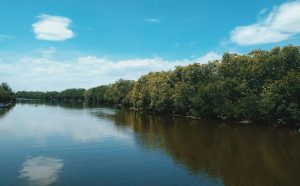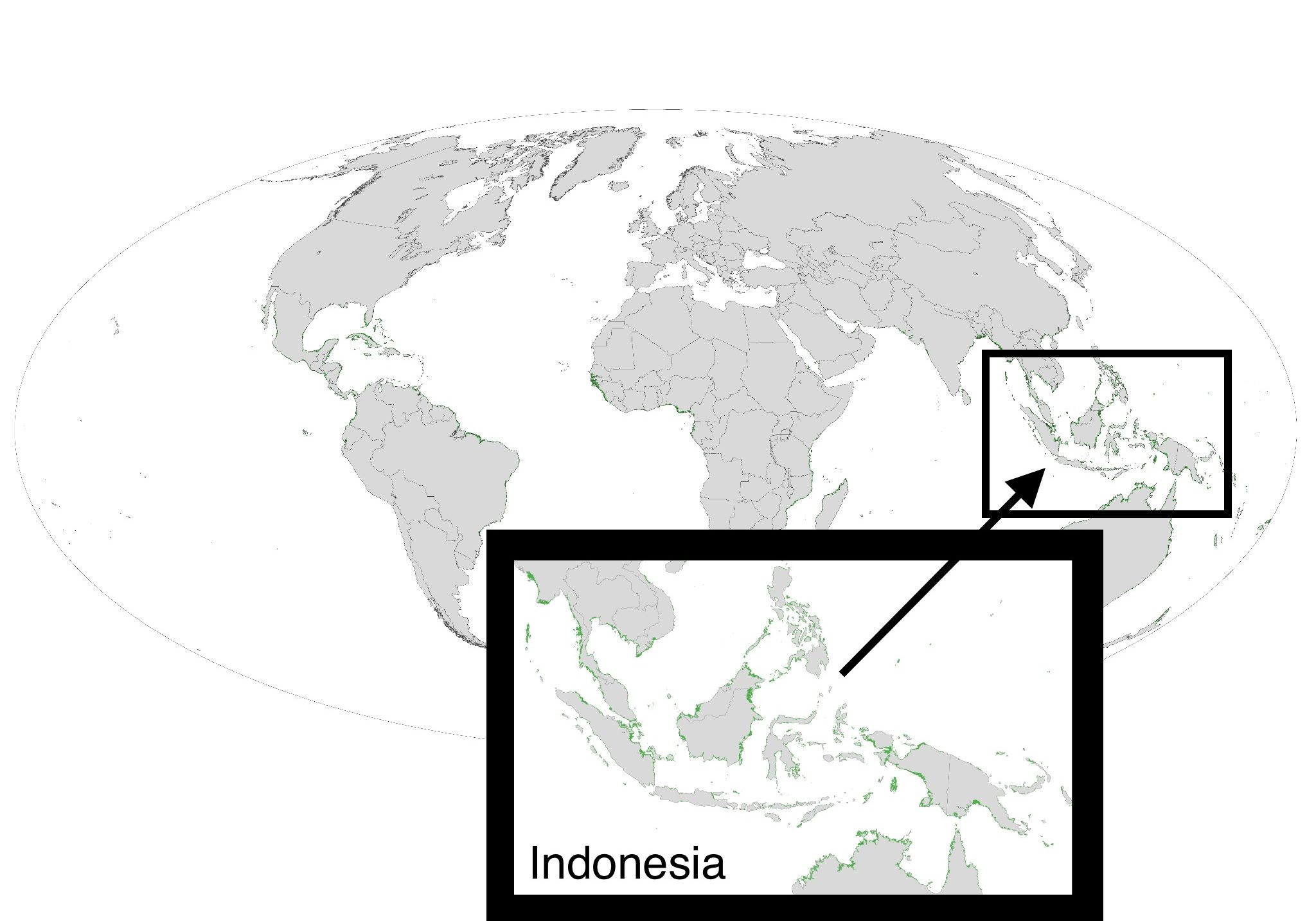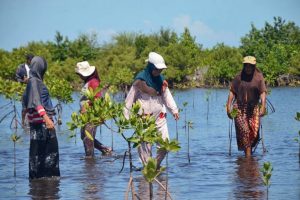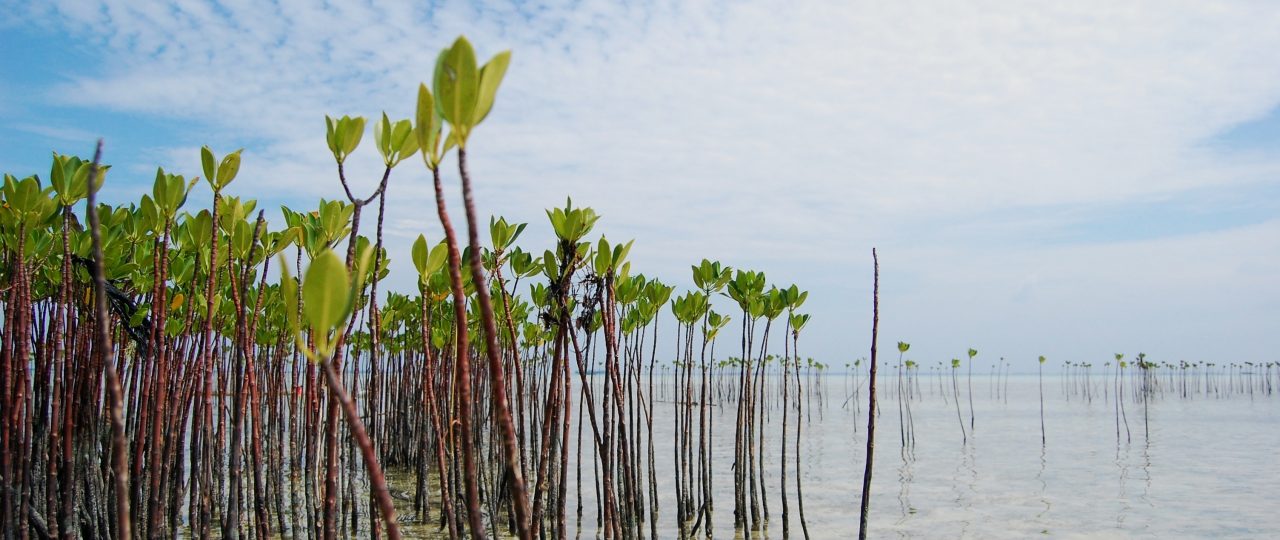Who’s Growing Indonesia’s Mangroves?

Are we prepared to lose these beautiful habitats? Image by Bayu Setiawan/Unsplash
Did you know that mangroves store more carbon than most forests on land? Aside from securing the carbon in the soil with their expansive roots, these saltwater forests are home to hundreds of species, and provide protection to local communities from storms and erosion.

Mangrove Distribution in Indonesia.
Original image by Jesse Allen/NASA.
You can find an interactive map here
Indonesia boasts the world’s largest mangrove forests, which comprise around 23% of the global mangrove area. However, 40% has been deforested in the past 3 decades, primarily for shrimp aquaculture, but also for agriculture and palm oil plantations.
What the Government is Doing
The Indonesian government has set the goal to restore 600,000 hectares of mangroves by 2024. Most restoration projects have been driven by the government’s Peatland and Mangrove Restoration Agency (BRGM). Decisions are usually made top-down, where the agency first maps out sites for rehabilitation, and then informs local communities. Then, plant seedlings are usually planted on abandoned shrimp ponds by paid locals.
These efforts have fallen short, and mangrove areas are declining rapidly. An FAO report indicated that Indonesia lost around 21,100 hectares of mangroves each year during 2010-2020, but only 34,911 ha in total have been recovered so far. Seedling mortality is high due to the poor water drainage in the ponds. The BRGM cited lack of funding and community opposition as the main obstacles to restoration efforts. Since government maps were often outdated, restoration plans often stop short with land disputes such as unclear land ownership and the presence of established shrimp farms in the area. Shrimp export generates more than 1.7 billion U.S. dollars of revenue for the country and supports the livelihood of many coastal families. We can’t simply shut down the industry to save mangroves, but what works?

Womangrove members tending their saplings.
Image by Wahyu Chandra/Mongabay-Indonesia
Communities to the Rescue
The prospects are not all gloomy: community-based mangrove ecological rehabilitation (CBEMR) methods have shown great potential. A case study on Tanakeke Island introduced a successful project that primarily focused on restoring hydrology by introducing water channels and dikes as needed, and used adaptive management to implement different planting strategies for different tree species. Consultation with village leaders started two years before the project started, which helped better understand the composition and needs of the community and resolve any land issues beforehand. Over 75% of these restored forests are recovering, and monitoring is conducted by the government, the NGO Blue Forests, and local communities. One of the major contributors is Womangrove collective, a group of women working on replanting mangroves and ultimately harvesting sustainable aquaculture produce from them. It provides learning opportunities for local women, enabling them to find new jobs, and plays a big role in raising awareness on the non-use values of mangroves.
In summary, Indonesia’s mangrove rehabilitation plan is unlikely to be completed by governmental effort alone; thorough engagement and collaborations with communities is crucial for the success of restoring these valuable habitats.
References
Brown, B., & Djamaluddin, R. (2017). A site history & field guide for ecological mangrove rehabilitation in Tiwoho Village, Bunaken National Marine Park, North Sulawesi, Indonesia. Center for International Forestry Research (CIFOR). https://www.cifor.org/publications/pdf_files/Books/BBrown1701.pdf
Food and Agriculture Organization of the United Nations (FAO). (2020). Global forest resources assessment 2020: Main report. https://doi.org/10.4060/ca9825en
Holl, K. D. (2020). Asian Mangroves: Community Involvement in Mangrove Restoration Provides Coastal Hazard Reduction and Enhances Human Livelihoods, Indonesia and Sri Lanka. Blue Forests. https://blue-forests.org/wp-content/uploads/2020/05/Holl-K-2020-Asian-Mangrove-Case-Study.pdf
Jong, H. N. (2022). Indonesia on track with peatland restoration, but bogged down with mangroves. Mongabay Environmental News. https://news.mongabay.com/2022/02/indonesia-on-track-with-peatland-restoration-but-bogged-down-with-mangroves/
Murdiyarso, D., Sukara, E., Supriatna, J., Koropitan, A., Mumbunan, S., Juliandi, B., & Jompa, J. (2018). Creating blue carbon opportunities in the maritime archipelago Indonesia (3). CIFOR. http://doi.org/10.17528/cifor/007058
Statistics Indonesia. (2020). Statistics of Marine and Coastal Resources 2020 (04320.2012). https://www.bps.go.id/publication/2020/11/27/643ef35d3f0ddd761b85d074/statistik-sumber-daya-laut-dan-pesisir-2020.html
